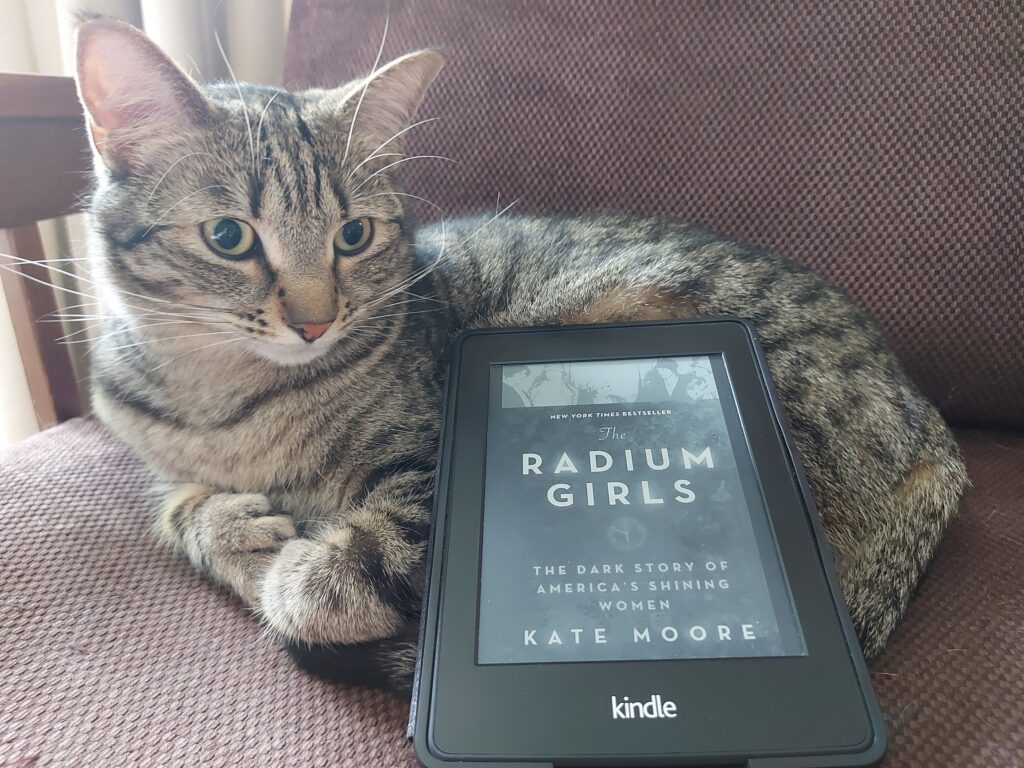The Radium Girls by Kate Moore

The Radium Girls is a nonfiction account of the incredibly horrifying story of the radium-dial factory workers in the United States. Their job was to paint watches, clocks and military dials with a luminous substance made from radium, but what they did not know is that radium is a dangerous element that would eventually kill them. I had heard of the Radium Girls before reading this book, but Kate Moore’s book really hits home the mistreatment of these women by the companies they worked for, medical professionals, and even their own communities.
Radium was discovered by Marie and Pierre Currie in 1898. By WWI, radium was being touted as a miracle drug that people were actually ingesting, which seems crazy from a 21st century viewpoint, but not enough was known publicly about the harmful affects of radium at the time to stop people from using it in everything. A job at a radium-dial factory was highly coveted by working class women, and these workers were known as the “shining girls” because they glowed from all the radium dust that they came into contact with while on the job. The shining girls unknowingly poisoned themselves by licking their radium infused paintbrushes while painting the dials. Many of them did not become sick until after they had left their jobs at the radium-dial factories, and the medical professionals that they sought assistance from knew nothing about radium poisoning, so it took a long time before anyone realized that it was their jobs at these factories that caused their ailments. When that correlation was finally made, the Radium Girls then faced an uphill legal battle against the factory owners who would not admit their culpability in radium poisoning.
The Radium Girls just goes to highlight how little regard men have for women. The radium-dial factory owners, who were men, knew that it was radium that was slowly killing their female workers, but they could not be bothered to put practices into place to limit the workers exposure to radium. Instead, they gaslit the workers by making them believe they were perfectly healthy, even when the medical tests performed by the companies’ own doctors proved otherwise.
The Radium Girls is an infuriating examination of sexism, and Moore does not hold back in detailing the pain and suffering the factory workers endured before their agonizing deaths, but what really stood out for me from this book was the resilience of the Radium Girls and how they fought for justice even while in excruciating pain and while their bodies were literally falling apart. It was because of them that new occupational and labour laws were put into place to protect workers’ rights. The Radium Girls is a remarkable true story that I think everyone would find interesting to read, even if you do not usually read nonfiction, and I highly recommend it.